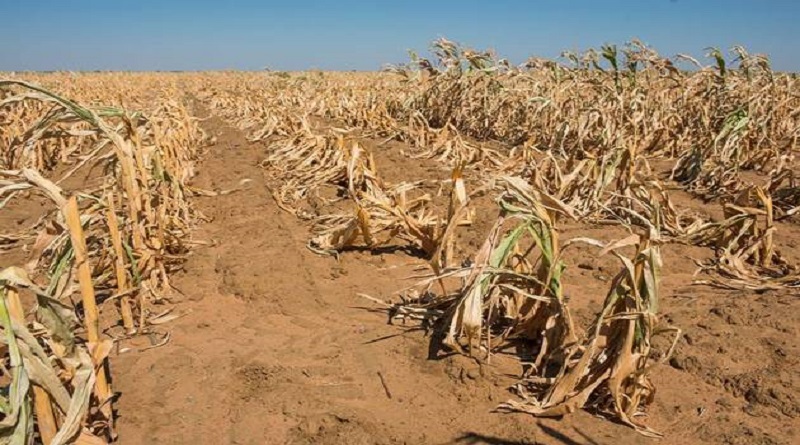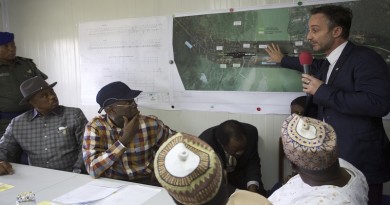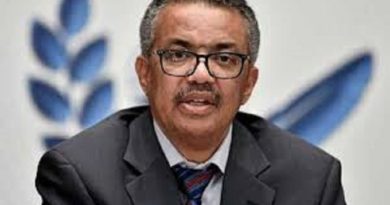Africa’s drylands near tipping point, but local communities could save it, experts say
Nearly half of Africa’s population could face a future of widespread drought, hunger and mass migration due to the effects of climate change – but there is still time to prevent catastrophe by restoring the continent’s drylands, said experts at GLF Africa: Restoring Africa’s Drylands.
Nigeria’s Minister of Environment H.E. Sharon Ikeazor, Fridays for Future activist Adenike Oladosu, and Ghanaian Sakoya chief Sintaro Iddrisu Mahama were among over 200 speakers who issued a rallying call for a concerted effort to restore the world’s drylands, almost half of which are located in Africa, to protect millions of livelihoods.
Drylands are areas that suffer from high water scarcity and are especially vulnerable to land degradation. They cover over 40% of the Earth’s land area, host a third of all biodiversity hotspots and are concentrated in developing countries. Land degradation in drylands, known as desertification, is causing more frequent droughts, reducing crop yields and livestock productivity, and threatening water and food security.
Africa’s drylands, home to 525 million people who depend primarily on rain-fed agriculture and livestock husbandry for their livelihoods, face a multitude of challenges including climate change and the economic fallout of the COVID-19 pandemic. Temperatures in the Sahel are rising 50% faster than the global average, while food prices have risen by nearly 40% over the past year.
“The drylands of Africa are granaries for hundreds of millions,” said Ibrahim Thiaw, executive secretary of the United Nations Convention to Combat Desertification (UNCCD).
“The good news is that dryland degradation can be reversed, recreating more resilient and productive landscapes that will fix more carbon especially in the soil, restore ecosystem services, promote new viable enterprises, and create employment, while reducing conflicts and migration.”
Hosted by the Global Landscapes Forum, the fully-online event on 2–3 June 2021 brought together thousands of participants from 186 countries, including pastoralists, scientists, youth activists, restoration practitioners and the highest levels of government, and reached over 22 million people through social media.
Featuring 47 sessions, the release of 12 white papers, and launches of several major initiatives, the conference provided critical insights on dryland restoration for policymakers ahead of the United Nations Decade on Ecosystem Restoration, which launches on World Environment Day, 5 June 2021. The UN Decade will accelerate action to protect, halt and reverse the degradation of ecosystems worldwide, including grasslands and savannas, peatlands, forests, farmlands, mountains, freshwater, coastal and marine ecosystems, and urban areas.
Key recommendations from experts across Africa included:
* Local communities, as custodians and owners of the land, need to be partners in restoration efforts. Programs must support local knowledge and provide investment and technologies to turn local innovations into viable businesses.
* Dryland restoration will transform livelihoods only if drylands are integrated into national economic and development plans.
* Local communities must be given options for their livelihoods. There will only be incentives to restore land if restoration opens up economic opportunities, especially for youth.
* Funding is needed to help communities use the land sustainably by improving their resilience to shocks, such as droughts and other climate disasters.
* Women need to be supported in leading intergenerational dialogues in their families and clans. Land tenure policies and social norms must ensure equitable access to land regardless of gender and age.
Launches included:
The GEF-7 Dryland Sustainable Landscapes Impact Program, which aims to transform dryland management across 11 countries in Africa and Asia.
The Luxembourg-GLF Finance for Nature Platform, a new partnership to expand the emerging market for global sustainable finance and to promote nature-based solutions to climate change, ecosystem degradation and biodiversity loss.
“Releasing the Underground Forest,” a white paper on a simple and low-cost way to restore degraded land known as farmer-managed natural regeneration (FMNR).
“We must use this window of opportunity to achieve the goals of the 2030 Agenda for Sustainable Development and observe the natural basis of survival for future generations in ecological, economic and social terms,” said Maria Flachsbarth, parliamentary state secretary for the German Federal Ministry for Economic Cooperation and Development (BMZ).
“It is all too obvious that we need a way of thinking and swift action worldwide – a transformation away from systems that harm the environment and society and towards sustainable systems.”
Local communities and youth have a crucial part to play in restoring the world’s drylands from the bottom up. The Youth in Landscapes Initiative and the Global Landscapes Forum joined forces to launch the second edition of the Restoration Stewards program, which will provide funding, mentorship, and training to five young restoration practitioners and their teams over the next year.
In partnership with the Robert Bosch Stiftung, the GLFx initiative announced a seed fund for the creation of five new local chapters in the greater Sahel region, which will each receive EUR 5,000 as well as technical support and training. GLFx is a global initiative led by the Global Landscapes Forum to accelerate local action towards more sustainable landscapes, consisting of independently organized chapters designed to foster restoration action on the ground.
“Healthy ecosystems are a prerequisite for sustainable development and climate resilience,” said Ottilie Bälz, senior vice president of the Robert Bosch Stiftung. “The Global Landscapes Forum provides much-needed support for local actors by building communities of practice and connecting the local level to international networks and resources. We are inspired by the power and the commitment that we have seen throughout GLF Africa, and we are proud to support the establishment of five new GLFx chapters in the greater Sahel region.”
“The restoration of African drylands is about restoring the balance between people, animals and the environment to sustain productivity in these fragile ecosystems, while supporting aspirations of the next generation for a modern life,” said Robert Nasi, Director General of the Center for International Forestry Research.




